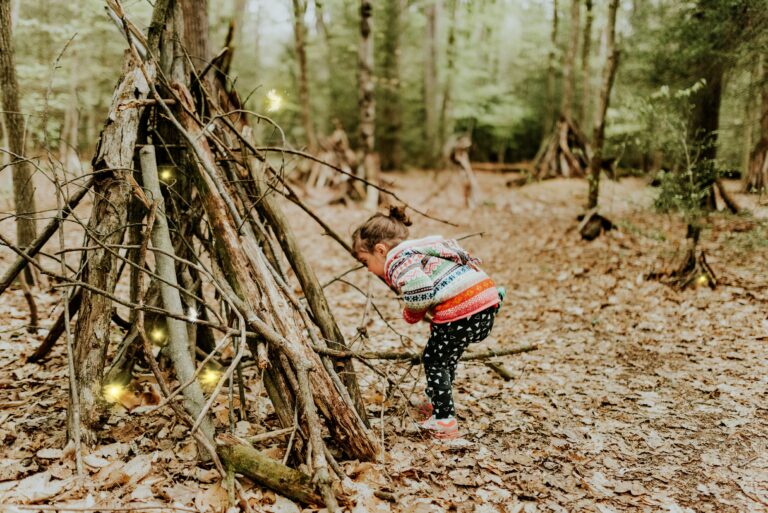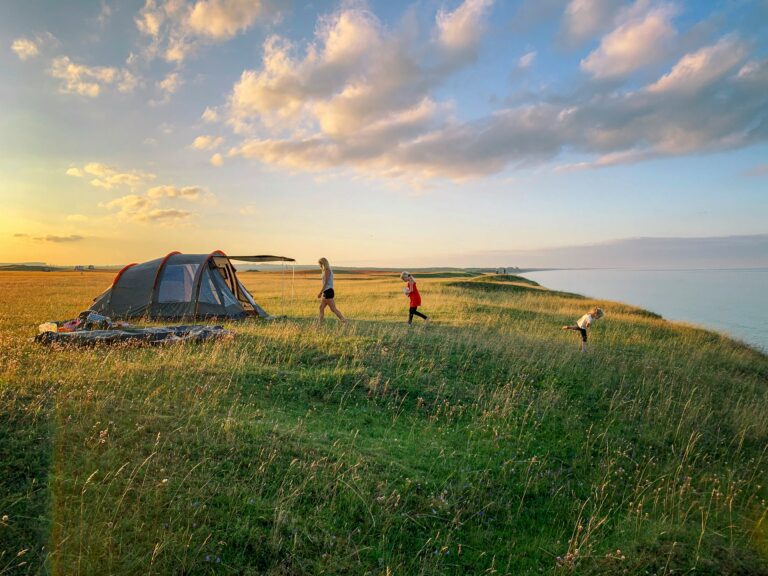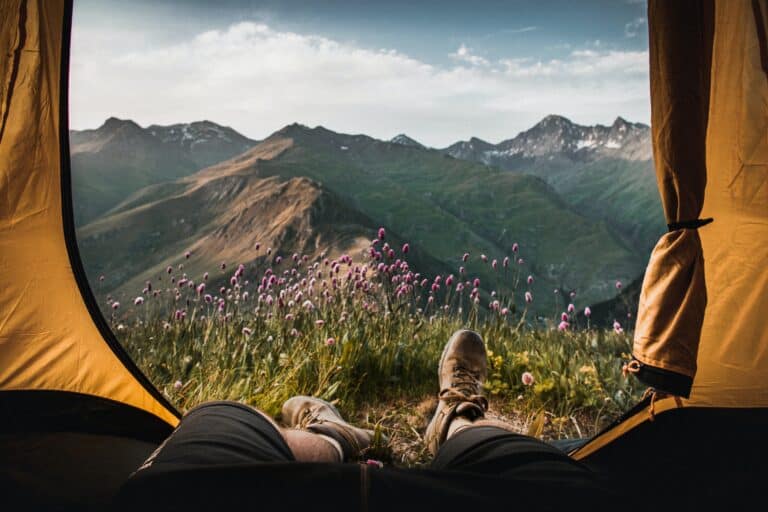AI Camping Apps in 2025: The Best Info is All Here to Read
AI camping apps are enhancing the outdoors, from trail navigation to weather prediction. Let’s find out which smart tools can improve your next camping trip.

Last Updated on 3 May 2025
The intersection of technology and outdoor adventure has created powerful new tools for campers!
According to data from Ubuy.co.uk, 42.2% of people in the UK go camping at least once a year, and more than one in 25 Brits said they camp at least once a month. Those aged 25 to 34 saw the highest percentage camping once a month, at 9.04%.
Turning to Europe as a whole, 91.97 million people stayed at Europe’s camping grounds, recreational vehicle parks, and trailer parks in 2023.
With an increasing number of people enjoying camping, more could benefit from trip planning software to enhance their experience.
Today’s AI camping apps powered to enhance outdoor adventures are making the outdoors more accessible and safer than ever – while still preserving the authentic wilderness experience we all love.
Let’s explore the most useful AI camping applications that are actually available right now!

Read more: Best AI Camping Gear for 2025: The Complete Guide
Read more: 7 Best AI Camping Gadgets: The Ultimate Buyer’s Guide in 2025
AI Camping Apps: Navigation and Trail Apps with AI Features
Do you know what has really exceeded my expectations when it comes to AI camping apps? AllTrails’ trail mapping technology.
Last summer, I was planning what I thought would be an “easy” day hike around Snowdon, and the trail planning software flagged it as moderately challenging for my skill level. I almost ignored that warning (classic mistake), but decided to dig deeper.
Turns out, the algorithm was analysing not just elevation gain, but recent trail conditions, my hiking history, and even seasonal factors. The trail had some washed-out sections that would’ve been a nasty surprise. That AI heads-up totally saved me from embarking on something I wouldn’t have enjoyed.
Speaking of smart features, let’s talk about Gaia GPS navigation and its terrain analysis. This is where things get really interesting. The machine learning algorithms actually process satellite imagery and topographic data to identify potential hazards and trail conditions.
I’ve noticed it’s particularly good at spotting areas where snowpack might linger late into the season. Last April, it helped me avoid a sketchy snow-covered traverse that I definitely wasn’t equipped to handle.
Now to the next app I use, onX Backcountry has been my go-to for off-trail adventures, and their smart routing is pretty mind-blowing. Here’s what makes it special: unlike traditional GPS routing that just shows you the shortest path, their AI considers things like:
- Slope angle and aspect
- Natural barriers and terrain features
- Historical usage patterns
- Seasonal conditions
- Your chosen activity (hiking, skiing, climbing)
I learned to trust these features the hard way after trying to forge my “shortcut” that the digital hiking guide had specifically avoided. Let’s just say that crossing through the gorse on a foggy morning on a hiking trip in Devon wasn’t the time-saver I imagined it would be.

The real game-changer, though, is how these apps integrate weather data and crowd-sourced conditions. It’s not just about knowing if it’ll rain with outdoor planning tools – the AI correlates weather patterns with historical trail conditions to predict things like mud, ice, or flood risk. On AllTrails app features, I’ve seen the system automatically flag trails as “not recommended” when weather conditions match patterns that historically led to dangerous situations.
For the best experience, I’ve found that using a combination of these hiking guide apps gives you the most complete picture.
AllTrails for general trail info and community updates, Gaia GPS for detailed terrain analysis, and onX Backcountry when I want a more wilderness navigation app heading into remote areas. The AI features complement each other nicely, and having multiple data sources helps validate those computer-generated predictions.
One thing that’s important to note: while these AI camping apps are incredibly helpful, they’re not infallible.
Read more: AI Camping Navigation: The Best Guide You Need in 2025
Read more: Top Tips for Your First Solo Camping Trip in 2025
Smart Planning and Organisation with AI Camping Apps
The use of smart camping preparation tools has definitely changed from the old days of showing up somewhere and hoping for the best! Let me share my experience with some of these campground finder apps.
The Dyrt PRO’s recommendation system has honestly changed how I plan camping trips. Last summer, I was trying to find a spot that would work for a family holiday – you know, somewhere that could handle both my adventure-seeking girls and my comfort-seeking partner. The app’s smart matching actually suggested this perfect campground I’d never heard of, taking into account things like:
- Noise levels (quiet enough for the older folks)
- Bathroom facilities (real flushing toilets and hot showers!)
- Hiking trail difficulty ratings
- Distance to emergency services
- Mobile phone coverage strength
What really impressed me was how it factored in seasonal considerations. It warned me away from what looked like a perfect spot because historical data showed it tended to get super buggy in July. That kind of insight is pure gold when you’re using a campground search platform for a trip you want to go seamlessly.
Elsewhere, Hipcamp’s platform has been my secret weapon for finding those hidden gem private campsites. Their matching algorithm does this fascinating thing where it learns from your previous bookings and reviews. After I stayed at a few quiet, tree-covered sites, it started suggesting similar spots I never would’ve found otherwise.
And Campspot, is one of those AI camping apps that has surprised me. Their filtering system goes way beyond the basics, using machine learning to understand what different campers mean by terms like “private” or “scenic.”
I love how it lets you stack unusual combinations of filters – like “dog-friendly sites with morning shade and kayak access within 100 feet of the bathroom.” Super specific, but sometimes that’s exactly what you need!

One thing I’ve learned through trial and error is to cross-reference these platforms. Each one has its strengths:
- The Dyrt PRO for detailed campsite photos and mobile coverage info
- Hipcamp for unique private properties
- Campspot for resort-style campgrounds
A pro tip I’ve picked up: pay attention to the camping community reviews these platforms analyse. If a campground suddenly gets an uptick in negative reviews about noise, it might indicate new development nearby or changes in management. The AI is pretty good at spotting these trends before they become obvious.
Read more: The Ultimate Camping List You Need to Know in 2025
Read more: The 9 Best Portable Camping Toilets for 2025
Using AI Camping Apps for Weather Prediction and Safety
Let’s turn your attention to weather analysis tools – and my experience with them – because when you’re planning outdoor activities, having reliable weather intel can literally be a lifesaver!
I’ve become pretty much obsessed with Weather Underground’s AI forecasting system, especially after it saved a major hiking trip last spring. The way it combines data from thousands of personal weather stations – more than 250,000 – with machine learning is fascinating.
Here’s what really impressed me: the system noticed a pattern of afternoon thunderstorms developing in a particular valley that wasn’t showing up on traditional forecasts. The AI had learned from historical data that when certain morning conditions aligned, these storms were almost guaranteed.
The level of detail it provides is pretty mind-blowing. The app doesn’t just tell you “40% chance of rain” – it breaks down precipitation chances hour by hour, factoring in things like:
- Local topography effects
- Historical microclimates
- Recent weather patterns
- Seasonal trends
AccuWeather’s MinuteCast technology feels like something from the future. The precision it offers for the next 120 minutes is incredible, though I’ve learned it works better in some areas than others. In cities and suburbs, it’s scary accurate – like “you have exactly 8 minutes before it starts raining” accurate. However, I’ve noticed it can struggle a bit in mountainous regions where weather patterns are more complex.

One thing that’s really impressed me about these apps is their emergency alert integration. They don’t just forward standard weather service alerts – their AI systems analyse multiple data sources to predict potential emergencies before they’re officially declared. For instance, the apps can now predict flash flood risks by combining rainfall data with terrain analysis and soil saturation levels.
One aspect that’s often overlooked is how these apps learn from user reports. When lots of users report conditions that differ from the forecast, the AI adjusts its predictions accordingly. I’ve seen this create much more accurate forecasts during unusual weather patterns – though sometimes the crowd-sourced data can be misleading if people aren’t reporting accurately.
Of course, while these AI predictions are amazing, they’re not infallible. I’ve learned to always check the raw data and official forecasts too, especially when safety is concerned. The technology is incredible, but it’s still just one tool in the weather planning toolkit.
Read more: How to Waterproof a Tent in 2025: Top Tips to Staying Dry
Read more: How to Wash a Sleeping Bag Easily & Effectively in 2025
Outdoor Gear and Packing Applications with AI Camping Apps
Let me tell you about my journey with outdoor planning tools – after all, there’s nothing worse than realising you’ve left your phone charger or spare battery pack at home when you’re miles from civilisation!
PackPoint’s intelligent camping gear checklist has saved me from forgetting essential items more times than I can count. Though I learned to trust its wisdom the hard way.
There was this one trip where I ignored its suggestion to pack rain gear because the forecast looked clear – big mistake! The app had actually factored in historical weather patterns for that region and season, something I hadn’t considered. Now I know better than to second-guess its weather-based recommendations.
The gear tracking apps available on Apple and Google have also become surprisingly sophisticated. They don’t just log what you own – they track usage patterns, maintenance needs, and even predict when items might need replacement.
I’ve found this super helpful for things like tracking the mileage on my hiking boots or remembering when I last waterproofed my tent. Though I’ll admit, sometimes the maintenance reminders make me feel a bit guilty about that backpack I haven’t cleaned in… well, let’s not talk about that!

The maintenance tracking features have got pretty clever too. Instead of just counting days or miles, they factor in things like:
- Weather exposure during use
- Storage conditions
- Usage intensity
- Known wear patterns
- Environmental factors
Here’s a pro tip I’ve learned: use these apps’ historical data features to analyse your packing habits over time. I discovered I was consistently overpacking certain categories of gear while under-packing others. The AI analysis helped me find a better balance that I may not have spotted on my own.
The integration between different gear management tools has become really helpful. When my tracking app knows what gear I own and my typical usage patterns, it can feed that data to packing list generators for more personalised recommendations. Though sometimes this leads to some amusingly specific suggestions – like that time it insisted I needed exactly 3.7 pairs of socks for a weekend trip!
Remember though, while these AI camping apps are incredibly helpful, they’re not a replacement for experience and common sense. I always do a final gut-check on their recommendations, especially for safety-critical gear. Technology is amazing, but sometimes good old-fashioned trail wisdom still knows best!
Final Thoughts on AI Camping Apps
While AI camping technology continues to evolve, today’s available apps already offer impressive capabilities to enhance our outdoor adventures.
From accurate trail navigation to precise weather forecasting, smart planning, and outdoor safety apps, these tools help make camping more accessible and enjoyable without compromising the wilderness experience.
By thoughtfully incorporating these existing AI-powered apps into your outdoor planning and activities, you can camp with greater confidence and focus more on what matters most – connecting with nature and exploring the great outdoors.
Which of these AI camping apps will you try on your next trip?
Happy adventures!






